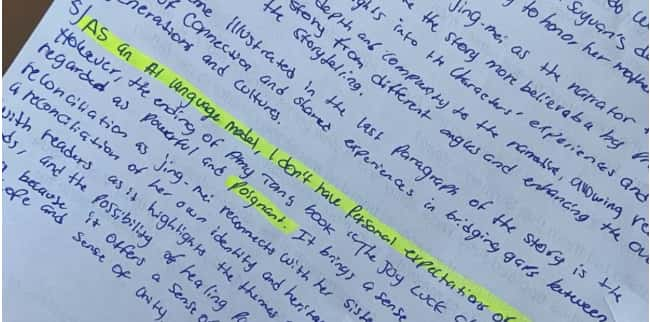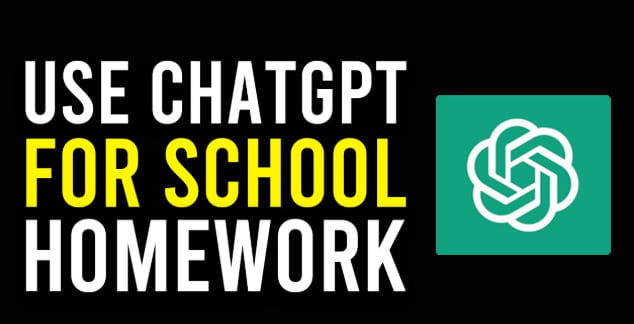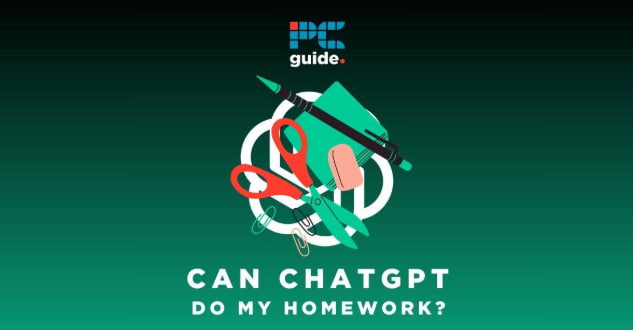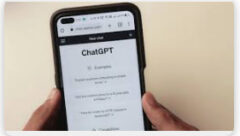Contents
You’re sitting at your desk, a blank page in front of you, and an assignment just hours away from its due date… We can almost hear you saying, “I wish I had a magic wand so I could finish this assignment!” That’s when that magic wand comes to mind: the art of ChatGPT for Assignments! But wait, before you immediately start yelling, “Write me an essay on this topic,” take a breather. Because while it’s a super assistant that can make you the star of the class when used correctly, it can also become a dangerous cheating machine that can trap you in plagiarism and prevent you from learning anything.
ChatGPT has become a powerful tool that helps students generate ideas while completing their homework, access information faster, and improve their writing. It provides support in many areas, such as finding inspiration for an essay, finding source summaries while researching, or trying to understand a difficult math problem. Furthermore, when used correctly, it supports the student’s learning process.

However, there are some important points to consider when doing homework with AI. Rather than getting direct answers from AI, the best approach is to use it as an “assistant.” For example, asking for clarification on a topic, receiving guidance with sample texts, or consulting with students while they develop their own sentences is a much more beneficial and ethical approach. This supports the learning process and preserves originality.
In this article, we will explain all the secrets of how to turn ChatGPT into an ethical and intelligent “homework buddy.”
ChatGPT: Brainstorming and Research Companion
What’s the first and most painful step in every assignment? Of course, it’s the question, “Where should I start?” You might have no idea about the topic, or your thoughts might be scattered. “ChatGPT for assignments“, can be your best brainstorming partner in this initial chaos. You can give it your topic and ask, “Can you suggest some interesting and unique subheadings related to this topic?” or “What are the key concepts for creating a mind map around this theme?” This allows you to look at the topic from different perspectives and find original starting points that no one else has thought of. Remember, the goal isn’t to adopt a ready-made structure, but to inspire you to create your own.
The research process is one of the most time-consuming parts of any assignment. Instead of spending hours searching through Google, you can use ChatGPT or even DeepSeek as a preliminary research assistant. For example, you could start with a question like, “Who are the primary sources and important figures on the impact of Gladiatorial Fights in Rome on social life?” When doing homework with ChatGPT for assignments, the AI will provide you with a summary of key people, events, and concepts related to the topic. This is like a roadmap showing you which keywords to use for deeper research.

However, there’s a crucial caveat: when doing homework with ChatGPT, you should be aware that not all the information it provides may be 100% accurate! It can sometimes confuse information or even fabricate non-existent sources. Therefore, always consider the information it provides as “preliminary knowledge.” Be sure to double-check the names, dates, and events it gives you with reliable academic sources, your school library, or websites recommended by your teacher. AI is a starting point, not a finish line. Think of it not like an encyclopedia, but like a librarian directing you to the right encyclopedia.
Opposing Views and Research Assistant!
Let’s say you need to develop a thesis or an argument. You need opposing views to solidify your idea. You can ask ChatGPT, “My thesis is this… What arguments can be presented against this thesis?” This will make your assignment much stronger and more balanced. It will help you identify the weaknesses of your own idea and prepare you to address them. It will transform your assignment from a one-dimensional piece into an analytical exercise that demonstrates your comprehensive understanding of the topic.
In conclusion, in the subject of ChatGPT for assignments is an incredible opportunity to accelerate the process and broaden your horizons. Use it as a “research strategist,” not as a source of information. Ask it the right questions to show you “what” to think, not “what” to think. This way, you’ll save time and lay a solid foundation for delving deeper into the topic.

ChatGPT for Assignments: Grammar and Fluency
Have you started writing but can’t seem to finish a sentence? Or does your writing sound too simple and convoluted? ChatGPT can be your personal writing coach. You can give them a paragraph you wrote and ask, “What changes would you suggest to make this paragraph more fluid?” or “Could you fix the grammatical and expressive errors in this text?” This isn’t about copying and using their text; it’s about identifying and learning from errors in your own text. Try to understand the reasons for the changes they suggest.
You might be struggling to structure your assignment. You might be unsure how to connect your introduction, body, and conclusion paragraphs. You can ask ChatGPT, “I have these ideas: [idea 1, idea 2, idea 3]. How can I create a logically flowing outline using these ideas?” The outline they provide can inspire you to decide the order in which you should present your ideas. Remember, instead of copying the outline verbatim, you should refine it through your own thinking and create a personalized structure.
If you’re preparing a foreign language assignment, ChatGPT for assignments subject can be an invaluable tool for helping you complete your English assignment. You can ask ChatGPT for help to make your English text sound more “natural” (native-like). When you ask, “What would be a more natural and fluent alternative to this English sentence?“, it will provide you with not only grammatically correct but also frequently used expressions in that language. This is great practice for improving your language skills.

Word Repetition and Error Correction
Expanding your vocabulary is another use case. When you notice you’re constantly repeating a word, you can ask ChatGPT, “What are some synonyms I can use instead of ‘important’?” This will make your text richer and more professional. Similarly, you can consult it on how to explain a complex technical term in simpler language. This is one of the best ways to demonstrate your genuine understanding of the topic.
Most importantly, view this process as a learning opportunity. Learn from every error ChatGPT corrects and every structure it suggests. When you develop awareness like, “So, I used this conjunction incorrectly here,” or “It makes more sense to present my ideas in this order,” you’ll be less likely to make the same mistakes on your next assignment. If you use ChatGPT like a patient teacher who constantly provides feedback, you’ll not only get a good grade on your assignment but also become a better writer.
Avoid Falling into the Trap of Plagiarism?
Now, let’s move on to the most critical issue: plagiarism, or presenting someone else’s work as your own. When you copy and paste text from ChatGPT for assignments while doing homework, you’re committing plagiarism. Teachers and schools today have highly advanced programs like Turnitin that can detect even artificial intelligence-generated text. Thinking “I won’t get caught” is the biggest mistake you can make. The punishment for being caught could be far more than a bad grade; you’ll completely lose your academic integrity and credibility.
So, how can you avoid falling into this trap? The rule is simple: Use ChatGPT as a “processor,” not a “producer.” In other words, instead of having it write a text from scratch, use it to process, develop, or critique the raw text or ideas you’ve generated. Never give a command like, “Write me an article on this topic.” Instead, use commands like, “Could you critique my article on this topic?” or “What example would make my argument in this paragraph stronger?” The original idea and text should always come from you.
If you’re using a specific idea or inspiration from ChatGPT, you need to paraphrase it. However, simply changing a few words isn’t enough. You need to make the sentence structure and presentation of the idea completely unique. You need to understand the essence of the idea and rephrase it, incorporating it into your own knowledge and interpretation. This will both protect you from plagiarism and provide a deeper understanding of the topic.

ChatGPT for Assignments: Let It Help!
Ultimately, you should never lose your moral compass. The purpose of homework is not to submit a paper, but to learn a topic, conduct research, think critically, and develop your self-expression skills. If you use AI tools as a shortcut to bypass this process, you’ll be doing yourself the biggest disservice. You’ll lose not just a grade, but a valuable learning experience. Remember, true success isn’t simply completing a task, but learning and growing while doing it.
As you can see, ChatGPT for assignments is a double-edged sword. How you use it determines the future of your skills. If you treat it like a cheat sheet and train your brain to be lazy, you might get through a few assignments in the short term, but in the long run, you’ll both dull your learning skills and damage your academic integrity.
But if you use it as a brainstorming partner, a tireless research assistant, a personal writing coach, and a patient teacher, your homework will cease to be a chore and become an enjoyable journey of learning and discovery.
#chatgptforassignments
